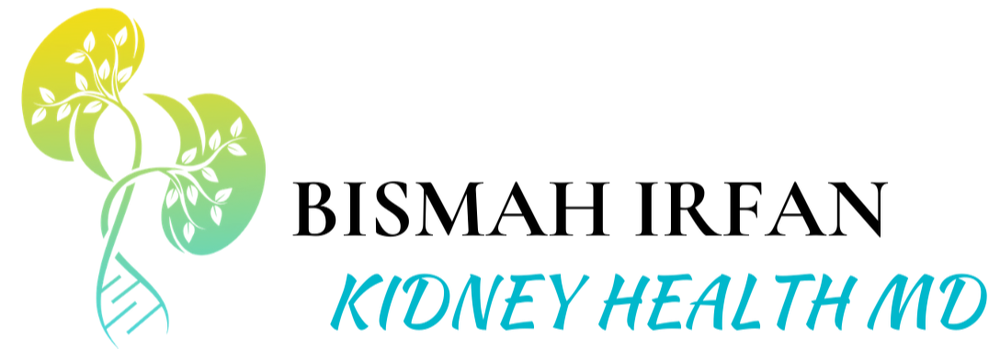Have you ever considered the potency of what’s on your plate? When it comes to managing Phosphorus Foods and CKD, food isn’t just fuel, but medicine. It can be a secret weapon or an insidious enemy – often disguised in tempting packages. Picture phosphorus as that versatile character actor who plays crucial roles in many body functions. From building strong bones to helping nerves function, phosphorus is there behind the scenes making sure everything runs smoothly. But for those battling chronic kidney disease (CKD), this essential mineral might turn from friend into foe.
Let’s turn the tables on diet and disease, by identifying high-phosphorus foods to protect our vital kidney health. Picture a maze full of hidden phosphorous sources: unexpected additives hiding in your everyday meals!
Phosphorus and Its Role in CKD
If you have been diagnosed with CKD, it is essential to comprehend the significance of phosphorus in your body’s functioning. As an essential mineral, phosphorus is involved in many body functions, from energy transfer to cell building. In a healthy individual, kidneys work diligently to regulate this element by removing extra phosphorus. But when you have CKD, this ability diminishes which leads to high phosphorous levels impacting your kidney function adversely.
The problem arises because excess phosphate can cause problems like joint pain or even heart disease. It gets more complicated as some foods naturally contain higher amounts of this mineral while others get additional quantities through food additives known as phosphate additives. Now that we know how important managing our intake is for maintaining High Blood Pressure and Kidney Disease with overall health, let’s explore what foods are high in phosphorous and discuss why managing their consumption matters so much.
Identifying High-Phosphorus Foods
An understanding of foods high in phosphorus can make all the difference when it comes to managing kidney health. Phosphorus-rich foods typically include meats, poultry, fish, nuts beans and dairy products.
Recognizing Hidden Sources of Phosphorus
The tricky part about phosphorus is that it doesn’t just come from organic sources. In fact, processed foods often have phosphate additives or preservatives snuck into them like uninvited party crashers. Fast foods and ready-to-eat meals are usual suspects here.
Inorganic forms of this mineral such as dicalcium phosphate or disodium phosphate might not ring any bells, but they’re frequently used additives making their way into your diet through these stealthy routes. Animals’ phosphorus is absorbed more effectively by the body than its vegetable equivalent, creating an extra layer of difficulty to this matter.
Understanding Phosphate Additives
A closer look at food labels can reveal surprising facts about the phosphoric content hidden within common items we consume daily. Not only does our nutrition hinge on recognizing these ingredients, but so does our overall well-being given how closely linked dietary choices are with conditions like chronic kidney disease (CKD).
Building a Low-Phosphorous Diet for CKD Patients

If you have CKD, it’s essential to watch out for food items that contain too much phosphorus. Why? Because your kidneys struggle to remove extra phosphorus from the blood. Finding balance is key. You want to get enough nutrition, but also manage your phosphorus intake effectively. And here’s where fresh fruits and vegetables become superstars. They are not just low in phosphorus, but also pack a nutritional punch.
Foods to Limit or Avoid
Dairy foods might be tempting, especially when they promise calcium and protein. But beware – these are typically high in phosphorus too. The same goes for beans, lentils, nuts as well as bran cereals and oatmeal. Delicious? Yes. High-phosphorous? Absolutely. Rather opt for alternatives like rice milk (unenriched), breads without added phosphate additives or fish that isn’t canned with preservatives. The American Nutrition and Dietetics website can help you find more guidance on this journey.
Reading Food Labels for Phosphorous Content
Knowing what’s in your food is crucial when managing kidney disease. But, phosphorus content isn’t always clear on nutrition facts labels. It can be hiding under names like “phosphoric acid” or “sodium phosphate”. So how do you spot these sneaky additives?
Consulting a Dietitian for a Kidney-Friendly Food Plan
Finding all the hidden sources of phosphorus may feel like searching for buried treasure without a map. Getting advice from a qualified nutritionist can make things simpler. A good place to start looking? The American Nutrition and Dietetics website. They’ve got resources to help you find someone who knows their way around this kind of dietary minefield.
Bear in mind that some foods might have more phosphorus than meets the eye because of phosphate additives. These could add up to 1000 mg/day of extra phosphorus. It’s critical to not just glance at, but comprehend food labels. In summary, keep an eagle eye out for tricky terms and get professional guidance if needed. With careful label reading and informed choices, you’re taking control over your kidney health.
Medications Used in Managing Phosphorous Levels
When managing kidney disease, a key step is keeping phosphorus levels under control. Why? High phosphorus can harm your body, leading to joint pain and even heart disease. To help with this task, health care teams often prescribe medications called phosphorus binders. These medicines work by controlling how much phosphorus your body absorbs from foods.
Finding Local Support
Are You Feeling Overwhelmed Taking New Medications or Modifying Your Diet? Don’t Stress. Ask For Assistance Reach Out To A CKD Dietitian Nearby They specialize in supporting people managing kidney disease through its challenges and are experts at guiding people through them successfully.
A local expert can explain more about high-phosphorus foods like dairy foods, beans, lentils, and nuts, and provide practical tips on what you should eat instead. They’ll also answer any frequently asked questions about reading nutrition facts labels so that you can choose fresh food items over those packed with phosphate additives. Contact a Functional Nephrologist in your area now.
FAQs in Relation to Phosphorus Foods and Ckd
What foods are high in phosphorus for kidney disease?
Foods like meats, poultry, fish, nuts, beans, and dairy products contain a lot of phosphorus. Processed foods often have added phosphate additives.
Should patients with CKD avoid phosphorus?
Yes. Patients with Chronic Kidney Disease (CKD) should limit their intake of high-phosphorus food because the kidneys can’t get rid of extra blood phosphorus effectively.
What are 4 foods that are rich in phosphorus?
Dairy products, meat and poultry, fish as well as certain types of nuts all pack a hefty punch when it comes to their content of this mineral.
How much phosphorus is allowed to a stage 3 CKD patient?
The recommended dietary allowance for adults is between 700mg-1400mg. But Stage 3 CKD patients may need less depending on individual circumstances. Always consult your doctor or dietitian about specific dietary needs.
Conclusion
Understanding the relationship between Phosphorus Foods and CKD is key to managing kidney health. You’ve learned how phosphorus plays a crucial role in many body functions, but can become a foe when kidneys aren’t functioning properly. You now know about high-phosphorus foods and their impact on kidney function. Remember that animal-based phosphorous gets absorbed more easily than plant-based ones, while processed foods often hide extra doses of this mineral.
We’ve also explored building a low-phosphorous diet by choosing fresh fruits, vegetables, fish and certain cereals while limiting dairy products, beans and nuts among others. Navigating food labels for hidden phosphate additives has been another critical lesson. And finally we discussed medications like phosphorous binders used to manage excess levels in patients with chronic kidney disease (CKD).


